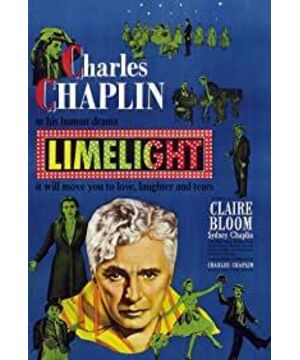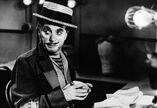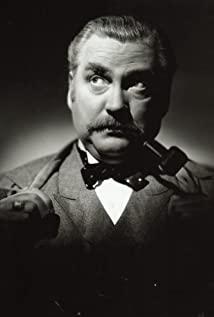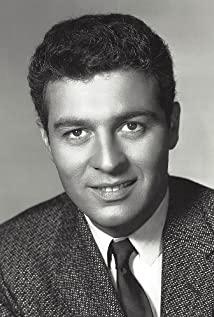"On the Stage" tells the story of an out-of-date comedian Calfello (played by Chaplin) who rescues a suicidal ballerina and encourages her to return to the stage. The Ballerina fell in love with her savior and helped Calfello continue his comedy career after he became famous. Calfello completed his final performance, and the audience responded enthusiastically. He himself came to the end of his life after the performance. The plot is simple and cliché, but the film is great enough and moving enough, especially if you look at Chaplin's entire comedy career.
"Stage Spring and Autumn" was filmed in 1952. Strictly speaking, it is not Chaplin's final work. But it was this year that Chaplin was forced to leave America, the heart of the film industry, due to the proliferation of McCarthyism. During Chaplin's sojourn in Europe, there were two more works that came out, but this departure has essentially announced the end of his film career. As the greatest master of comedy films in the 20th century, Chaplin also has a time when the hero falls. Perhaps it was because Chaplin had a premonition that his artistic career was coming to an end, or perhaps it was because Chaplin felt that he too was getting out of breath, if not already. He made this work that can be said to have sealed his comedy career.
Calfero in the movie naturally has many shadows of Chaplin himself. He was a hugely successful burlesque actor, but in his later years became box-office poison. In his performance, the audience either dozed off or left the stage early, but no one laughed. Usually, burlesque doesn't make people laugh for two reasons, the first is that the audience's tastes have changed, and the second is that the actor's own creative ability has declined. As for Calfello, he undoubtedly belongs to the latter.
The burlesque performed by Calfero in "The Spring and Autumn of the Stage" is really not funny at all. And when you realize that these burlesques were actually designed by Chaplin, it's a nightmare. Who would believe that the most outstanding comedy master of the 20th century could have designed such hilarious dramas that are not even third-rate. Paradoxically, the burlesque that finally won applause from the audience was exactly the same as the one that blew the audience away in the first place. Does Chaplin think that the same thing can win back the hearts of the audience. I dare not think so, I can only wishful thinking, this is his deliberate design.
Now back to the question at the beginning of the article.
Nothing is more suitable to be your own final piece than creating a work that deconstructs your artistic career. So, the world's greatest comedic genius lost the ability to make laughter in the film. The less the audience laughed, the harder he played. But the harder he works and the more devoted he is, the more sad those who love him feel. The man who once gave the audience countless laughter, now brings only boredom, sleepiness and embarrassment. What's even more unforgettable is that in the final performance, the audience was amused by Calfero, and the audience stooped back and forth. Moreover, they did not come out of sympathy or feelings, but from the heart, they were amused and cheered for Calfero.
Do you laugh at things that are not funny?
Will not.
But you did laugh.
It was the director's arrangement.
Also by the director's arrangement, Buster Keaton -- Chaplin's lifelong antagonist -- made a cameo appearance as a co-star for Calfello, an equally down-to-earth comedian. Two great comedic talents, working together in such a role and in such a format, show that they really understand and accept the reality that their time has passed.
This is also the reason why Calfero can calmly leave the stage in "The Spring and Autumn of the Stage". "At my age, living is just a habit," he said earnestly to the ballerina who committed suicide.
Yet living is not just a habit, it can also be a continuation. In the film, Calfero died suddenly backstage after his performance. As soon as the white sheet covers Calfero's body, the camera turns to the stage. There, the ballerina he rescued was dancing. In 1914, when the story of the film took place, the real Chaplin made his first film.
View more about Limelight reviews











